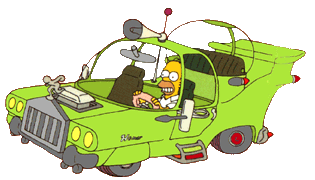
In the Simpsons episode 7F16,
Oh Brother Where Art Thou, Grampa Simpson reveals to the family a long-hidden secret: Homer has a half-brother. Homer's brother, Herb Powell, is the head of the Powell Motors car company, and decides that as an "average" American, Homer is the perfect designer for a car catering to other "average" Americans. Homer is given free design reign and all ends poorly. Homer's car is finned monstrosity featuring three horns that play "La Cucaracha" and a separate sound-proof bubble dome for the children (featuring optional restraints and muzzles.) Powell Motors is doomed.
I've often used this scenario as an example of not asking users the right questions. By asking "Do you wants" instead of "Tell me abouts," you're leveraging the user's design expertise and not your own.
Consider any design suggestion a user makes not as a design requirement, but as a reflection of a problem that needs to be solved. Does the user really want three horns that play La Cucaracha, or does he want to be
noticed? And never, ever ask yes or no questions. If you ask a parent "How about a soundproof bubble for the children with optional restraints and muzzles,"
of course the parent is going to say yes.
Ultimately however, the episode's punchline isn't that Homer is a poor designer and that his efforts have yielded a monstrosity. Homer was tasked with designing a car to meet his own needs and desires, and he succeeded. The punchline is that his half-brother Herb mistakely assumed that as a consumer, Homer was representative of anyone other than Homer.
To avoid releasing a Homer, a team must:
- Inform the design with information gathered from real, representative users. What are the users' goals? What are their characteristics? What challenges do they face with similar products?
- Design the product to meet these considerations.
- Validate the design decisions by watching real users interact with the product.
Success lies in designing a product that addresses the problems that many real users wish to solve.



